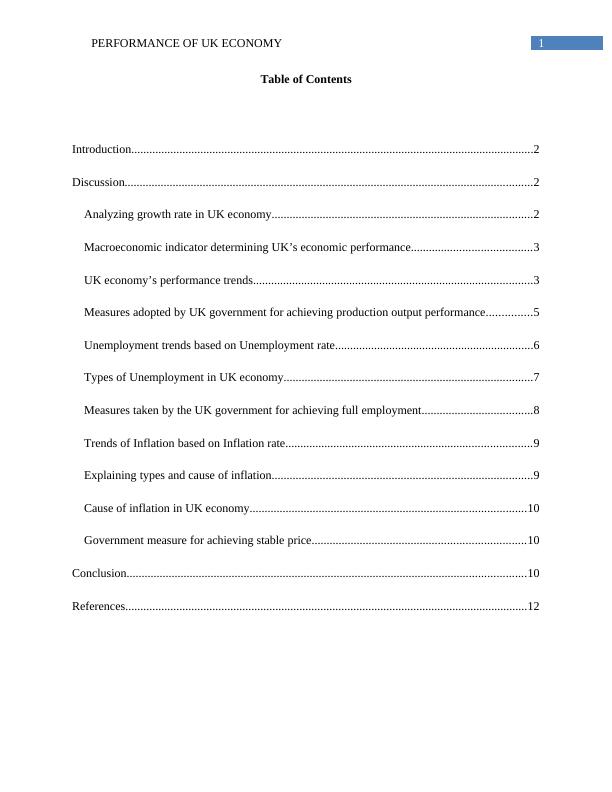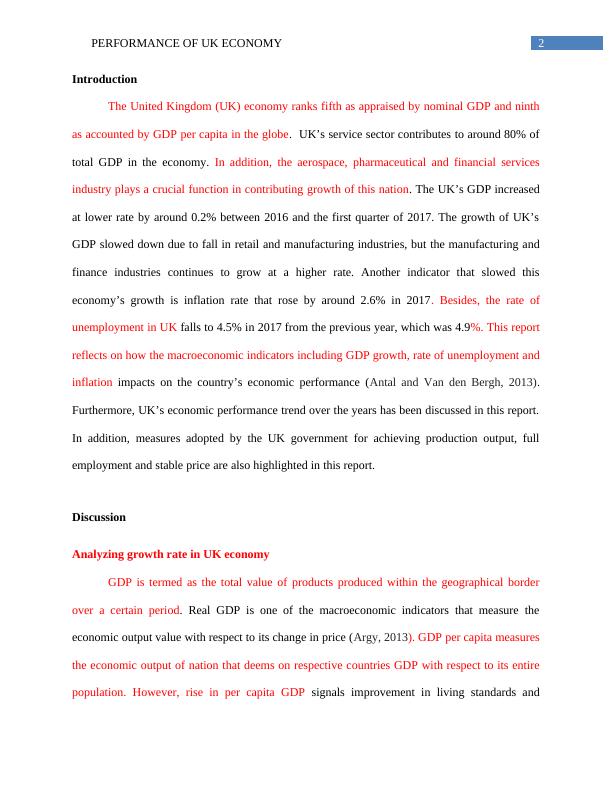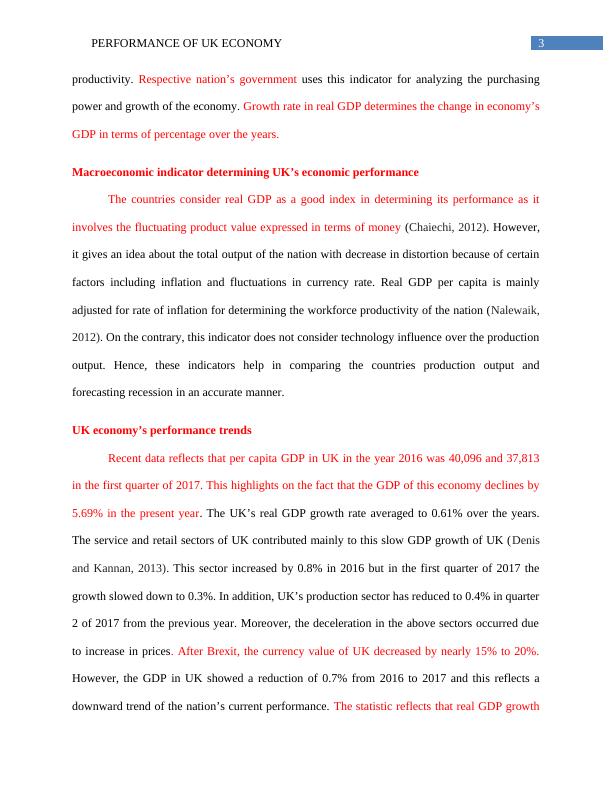L100 - Performance of UK Economy - Individual Report
UNIVERSITY OF PORTSMOUTH
Economics (L100)
Added on 2020-03-04
About This Document
In this document, we will discuss issues considering the performance of the UK economy. Analyzing the UK economy's growth rate and the measures accepted by the UK government to achieve production output performance. Explanation of the types and causes of inflation, as well as government policies aimed at achieving price stability. Types of Unemployment in UK economy, Measures taken by the UK government for achieving full employment, Trends of Inflation based on Inflation rate, Explaining types and cause of inflation, Cause of inflation in UK economy, Government measure for achieving stable price
L100 - Performance of UK Economy - Individual Report
UNIVERSITY OF PORTSMOUTH
Economics (L100)
Added on 2020-03-04
End of preview
Want to access all the pages? Upload your documents or become a member.




